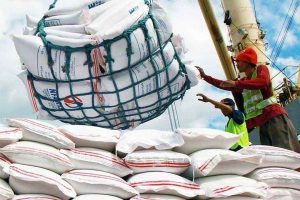THE PHILIPPINES imported 1.81 million metric tons (MT) of rice in the six months to June, down 6.43% from a year earlier, according to the Bureau of Plant Industry, amid the improving supply of domestically-grown rice.
In June, rice imports dropped 56.13% to 187,530.760 MT. They also fell month on month against the 319,482.360 MT shipped in May.
During the first half, Vietnam remained the top source of imported rice, accounting for 1.61 million MT or 89.09% of the total.
It was followed by Myanmar and Thailand with 81,895 MT and 73,667 MT, respectively.
Agriculture Undersecretary for Rice Industry Development Leocadio S. Sebastian said that the private sector is guided by market forces because most imports have been liberalized.
Republic Act No. 11203 or the Rice Tariffication Law of 2019, opened up rice imports to private traders but required importers to pay a 35% tariff on grain bought in from Southeast Asia.
It also created the Rice Competitiveness Enhancement Fund, which is allotted an annual budget of P10 billion between 2019 to 2024, funded from rice import tariffs.
Mr. Sebastian said that the domestic harvest has improved in recent months compared to the results achieved year earlier. The Philippine Rice Information System estimates that the harvest of palay, or unmilled rice, rose 6% in the first six months.
“With the favorable weather during harvest time, the quality of the palay was very good. A good quality of harvest plus a high price of rice in the global market encouraged many rice traders to buy our locally-produced rice,” he told BusinessWorld in a Viber message.
“Hence, the buying price of palay was also high, enabling our farmers to recover from the high cost of inputs (such as fertilizer and fuel),” he added.
According to Mr. Sebastian, the volume of imported rice that has been landed remains high as the Philippines does not expect to match last year’s import levels. Imports in 2022 hit 3.8 million MT.
“Last year’s total imports were much higher than the projected requirement. We also hope to recover from the 2022 crop year’s reduced production due to the high cost of fuel and fertilizer,” he said.
“The traders are likely to import more rice as global rice prices ease (as fertilizer and fuel costs decline), if local demand requires it,” he said.
The Department of Agriculture’s price monitors put the price of domestic well-milled rice on Monday at between P40 and P46, while regular-milled rice was between P36 and P42.
Imported well-milled rice sells in Metro Manila markets at between P40 and P48. The Philippines does not import regular-milled rice. — Sheldeen Joy Talavera

